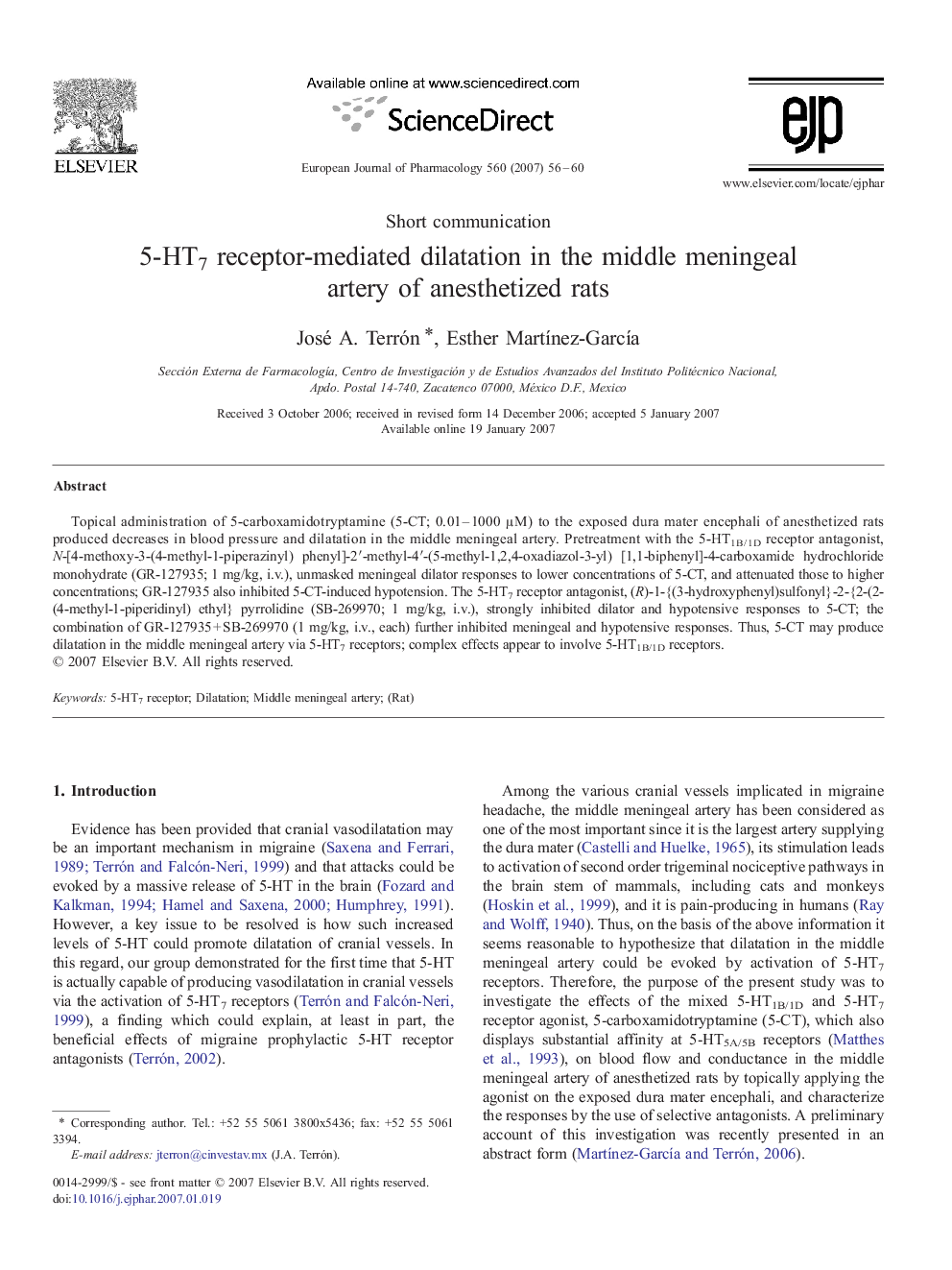| Article ID | Journal | Published Year | Pages | File Type |
|---|---|---|---|---|
| 2536388 | European Journal of Pharmacology | 2007 | 5 Pages |
Topical administration of 5-carboxamidotryptamine (5-CT; 0.01–1000 μM) to the exposed dura mater encephali of anesthetized rats produced decreases in blood pressure and dilatation in the middle meningeal artery. Pretreatment with the 5-HT1B/1D receptor antagonist, N-[4-methoxy-3-(4-methyl-1-piperazinyl) phenyl]-2′-methyl-4′-(5-methyl-1,2,4-oxadiazol-3-yl) [1,1-biphenyl]-4-carboxamide hydrochloride monohydrate (GR-127935; 1 mg/kg, i.v.), unmasked meningeal dilator responses to lower concentrations of 5-CT, and attenuated those to higher concentrations; GR-127935 also inhibited 5-CT-induced hypotension. The 5-HT7 receptor antagonist, (R)-1-{(3-hydroxyphenyl)sulfonyl}-2-{2-(2-(4-methyl-1-piperidinyl) ethyl} pyrrolidine (SB-269970; 1 mg/kg, i.v.), strongly inhibited dilator and hypotensive responses to 5-CT; the combination of GR-127935 + SB-269970 (1 mg/kg, i.v., each) further inhibited meningeal and hypotensive responses. Thus, 5-CT may produce dilatation in the middle meningeal artery via 5-HT7 receptors; complex effects appear to involve 5-HT1B/1D receptors.
